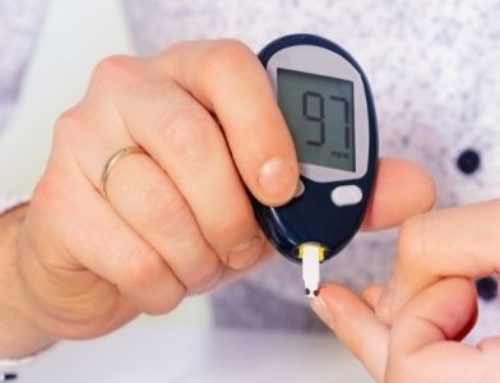
During a first consultation, it’s common for someone with diabetes to state that weight loss as their main reason for seeing me.
“I want to lose weight” they say. It’s less common to hear “I want to get my blood sugar levels under control” or “I want to avoid high blood sugar levels”.
Contrary to popular belief, losing weight does not automatically mean better blood sugar control. Whilst there is strong evidence that weight loss is associated with improvements in blood sugar control, there are also many studies that show minimal to no improvement in blood sugar control despite weight loss. So, should we just be focusing on weight loss alone as the goal of diabetes management? Or should we actually be looking at other goals?
A ‘lifestyle disease’ requires a lifestyle fix
Type 2 Diabetes is often described as a lifestyle disease. Let’s look at our lifestyles: These days we are spending more time sitting and being inactive, both at work and at home. Incidental physical activity is low, and more than ever we are relying solely on structured exercise to meet our physical activity needs.
Our food environment has changed too. It is easier than ever to fill up on calorie-dense hyper-palatable food. It is now possible to get nearly a full day’s worth of calorie needs in one large “combo” meal without even needing to leave the comfort of your car, or even your couch (hello food delivery!). Special occasion foods such as biscuits, baked goods and chocolate are now part of the everyday diet.
These two factors over time would negatively impact insulin resistance which can then result in higher blood sugar levels. It also does not help that those two lifestyle factors are often combined, resulting in weight gain which then further worsens insulin resistance and blood sugar levels. So rather than focusing on weight (which is often a symptom of the underlying lifestyle issues), let’s focus on fixing the root cause.
Incidental movement – small yet significant.
Ah exercise – the bane of our busy existence. Most of us are so worn-out by our daily routine that it can be a struggle to feel motivated enough to do 30-minutes of vigorous exercise. And quite frankly, most of us just cannot see how it could be possible to schedule a time for it in our busy routines.
This is where incidental physical activity comes in. This is the movement that you do when you’re walking from your car to your office, or walking to get a drink of water or use the toilet. It’s the movement that you do as part of your other tasks, which makes this particularly beneficial for busy people with little time to exercise as you do not need to find that extra 30-minutes to schedule in exercise. And whilst incidental physical activity may not result in significant weight loss, these little movements will still go a long way in helping your body use insulin more effectively, resulting in improved blood sugar levels and better diabetes control.
Here are some suggestions on how you can increase your incidental movements across the day:
- Park your car further away at work and at the shops.
- Avoid using drive-thru, instead park your car a little further away and walk inside to pick up your food.
- Get off the bus one stop earlier.
- Take the stairs instead of the lift (tip: it’s easier to start taking the stairs down instead of up!) or get off the lift a few floors earlier and take the stairs for the remaining floors.
- Use the bathroom that is furthest away from your work area.
- Use a standing desk at work when possible.
- Pace back-and-forth whilst waiting for your takeaway coffee to be made.
The other benefit of increasing incidental physical activity is that it’s often linked to activities that we do as part of our everyday routine, making it more likely to form a positive habit over time. Once a habit has been formed, the action feels effortless – kind of like tying your shoelaces. We can all remember struggling to do them up when we were learning as children, but as adults we can now do it without much thought or effort. This then brings me to my next point with physical activity…
Consistency is the key
Often when we start doing more physical activity, we’re highly motivated. We’ve made sacrifices in order to schedule in more structured exercise, and we’ve made the conscious effort to move a little more incidentally. We’re really consistent, doing planned activities regularly throughout the week. These are all good intentions however they are often done with a single goal in mind: To lose weight.
If there was not much weight loss after all that effort, or if the weight loss starts to plateau, motivation starts to take a slump. We’re less willing to make the sacrifices or put in the effort that we have been doing all this time now as we no longer see the point of it. We’re no longer moving as consistently as before, going back to our old habits of being sedentary most days with the odd exercise session every now and then spurred on by things such as a high blood sugar level or clothing feeling just a little too snug.
But what if we viewed physical activity and movement in a different light? Rather than being solely a weight loss tool, what if we viewed it as a daily necessity for managing diabetes – the lifestyle cure for the lifestyle disease, regardless of effect on body weight? You may find that the motivation to stay consistent over time may improve.
In summary, increasing physical activity and movement is a key factor in improving your diabetes control – with or without weight loss. The goal is to be able to do it consistently, meaning that the best kind of physical activity is the one that you can do with minimal effort most days of the week.
In Part 2 of this article I will be covering the topic of food intake and why it’s not just about the weight loss. Stay tuned!
If you need help to manage your diabetes, get in touch with Melissa Yip
Hear more from Melissa’s guest appearance on The Daily Dollop podcast!



